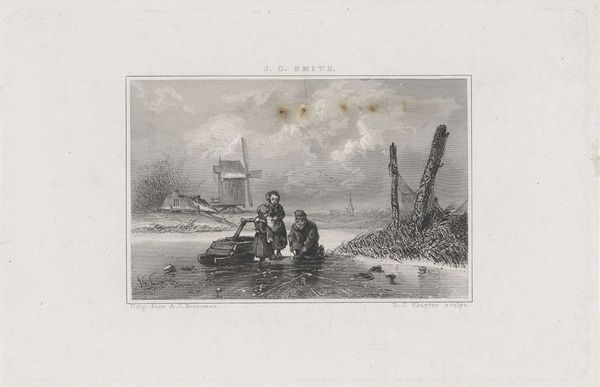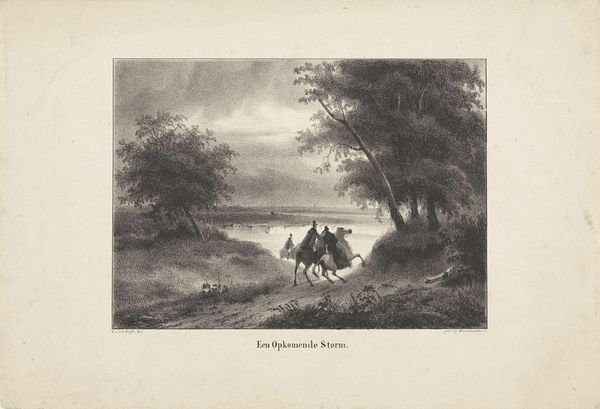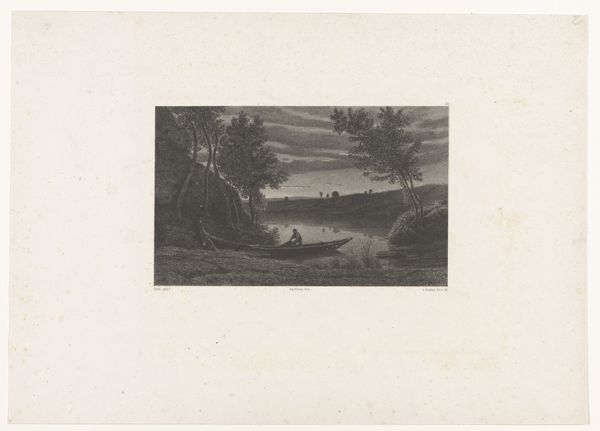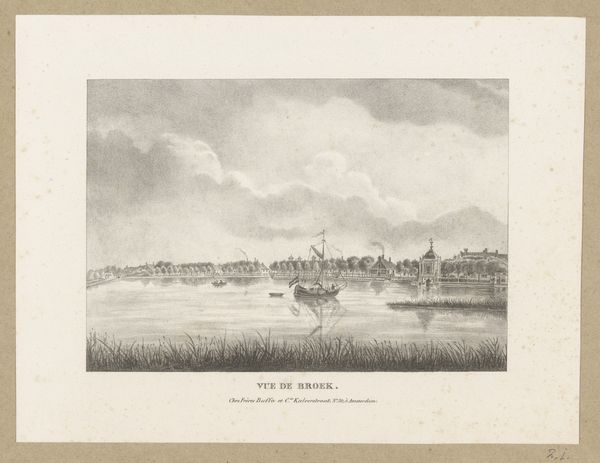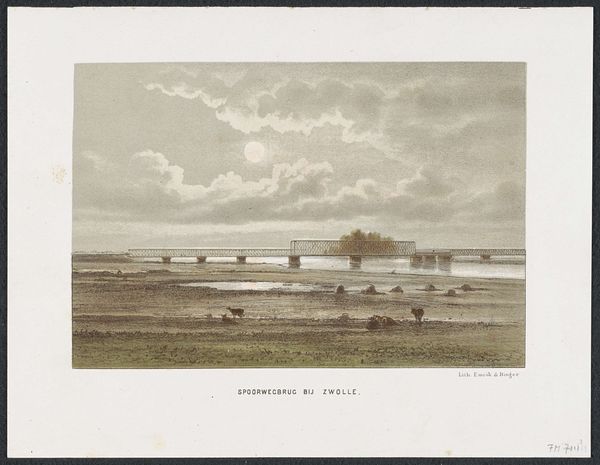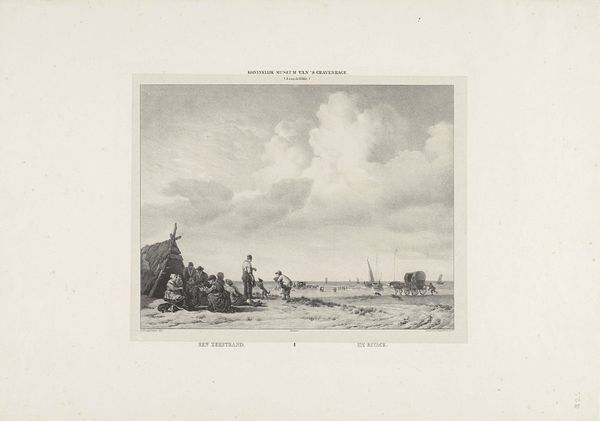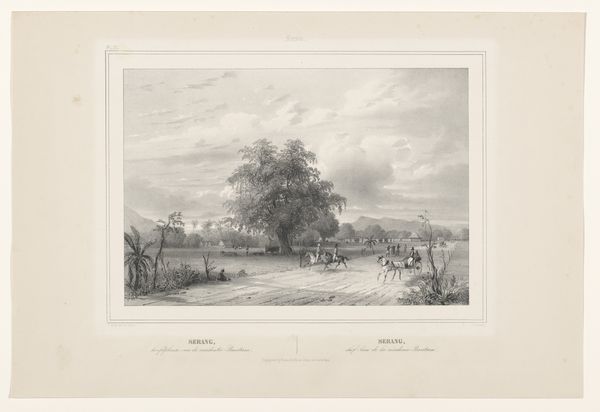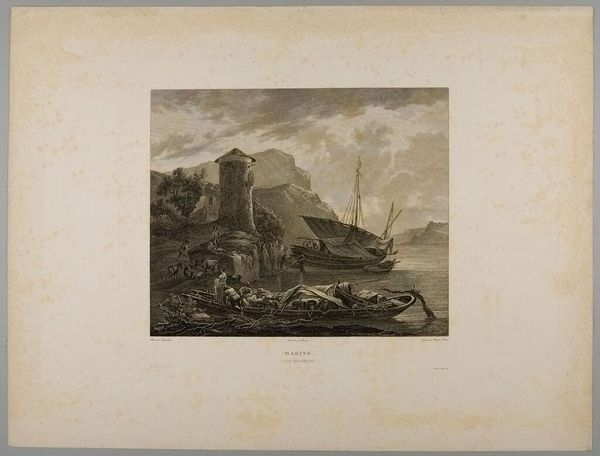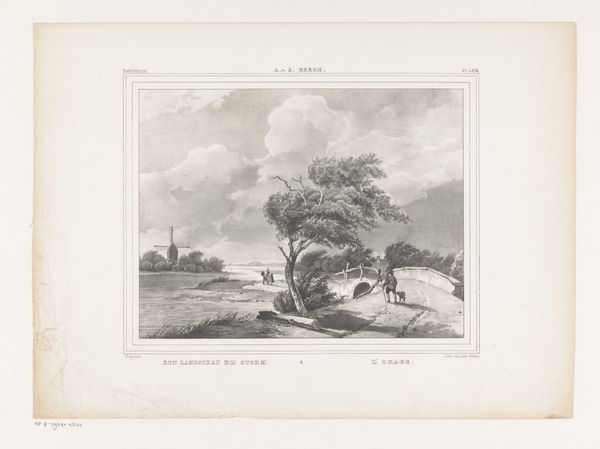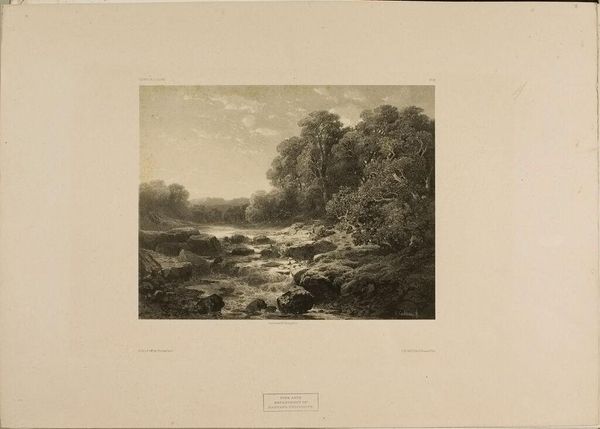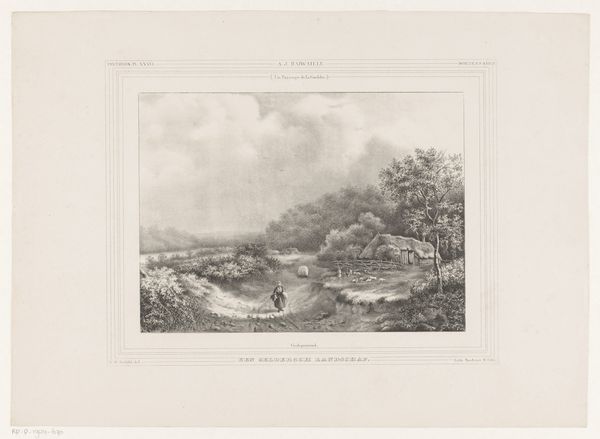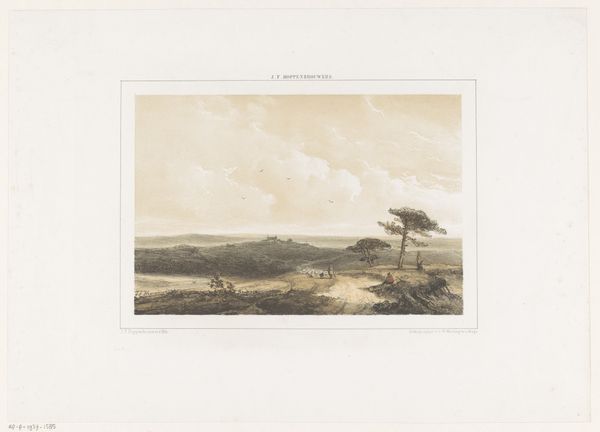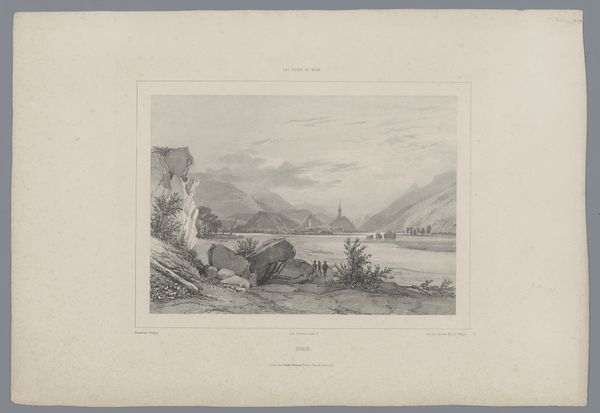
#
pencil drawn
#
photo of handprinted image
#
light pencil work
#
pale palette
#
ink paper printed
#
pencil sketch
#
light coloured
#
pencil work
#
watercolour illustration
#
watercolor
Dimensions: height 292 mm, width 375 mm
Copyright: Rijks Museum: Open Domain
Curator: The work before us is “De Stoppelberg” created between 1857 and 1864, by Hendrik-Dirk Kruseman Van Elten. It appears to be an illustration of a harvested field and landscape, rendered in ink and pencil on paper. My immediate thought is how much detail he captures with so few apparent materials. Editor: There’s an almost ethereal quality to this. The pale palette lends it a dreamlike air. I’m also struck by the composition; it's simple, but evokes a sense of place, maybe a memory of rural life? Curator: I agree; the lack of vibrant color really lets the texture do the work. The clouds, for instance. You can almost feel the weight of the sky bearing down. Looking at it materially, I'd be curious to know how the print was made, what types of paper and ink were locally sourced. The image production plays such an integral role in disseminating concepts of nationhood and identity during the mid-19th century. Editor: Absolutely, thinking of its historical context allows me to further reflect on land usage and agriculture as a social landscape of power relations. What sort of societal narratives are implicit in this seemingly placid vista of a harvested field? Who has the privilege of surveying and documenting these environments? Curator: Precisely! It begs us to explore the intersection of nature and social structures during this era. Is it a neutral recording, or a carefully constructed presentation meant to shape public understanding and national pride? Editor: Well, given Van Elten’s other work, and the Romanticism prevalent at the time, I suspect he saw the landscape as more than just arable land. Perhaps a source of spiritual or national identity. But this is complicated by issues of land ownership, labor exploitation inherent to agrarian societies... I find these tensions incredibly compelling. Curator: I do agree; there is an incredible, conflicting sense of serenity and subtle unrest, made accessible by a kind of simple materiality. It offers a lens onto broader themes of environmental exploitation within the context of expanding industrialized nations. Editor: So, while the "De Stoppelberg" initially comes across as an uncomplicated landscape image, a deeper dive reveals a dense and complex relationship between art, agriculture, nationhood and the power dynamics underpinning its social and political landscape.
Comments
No comments
Be the first to comment and join the conversation on the ultimate creative platform.
